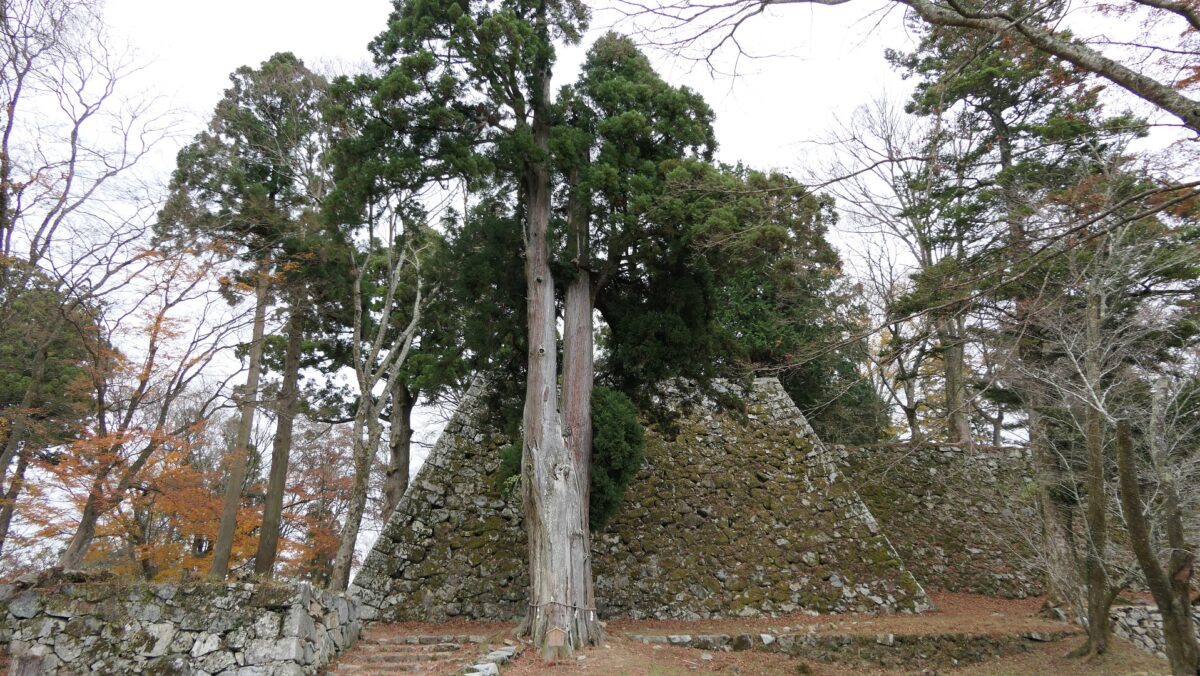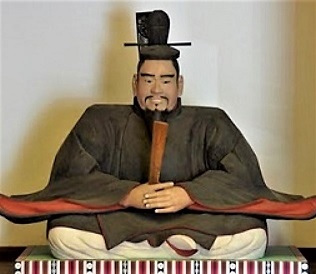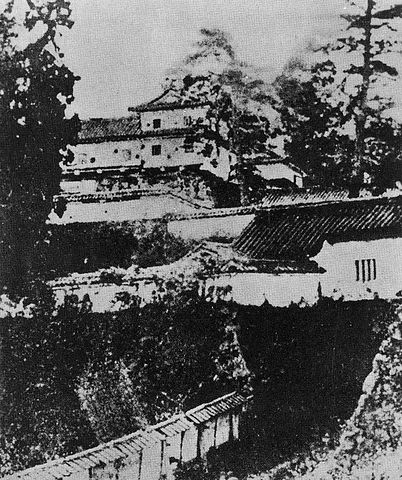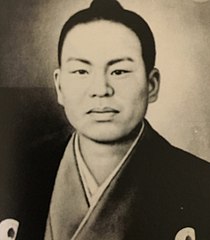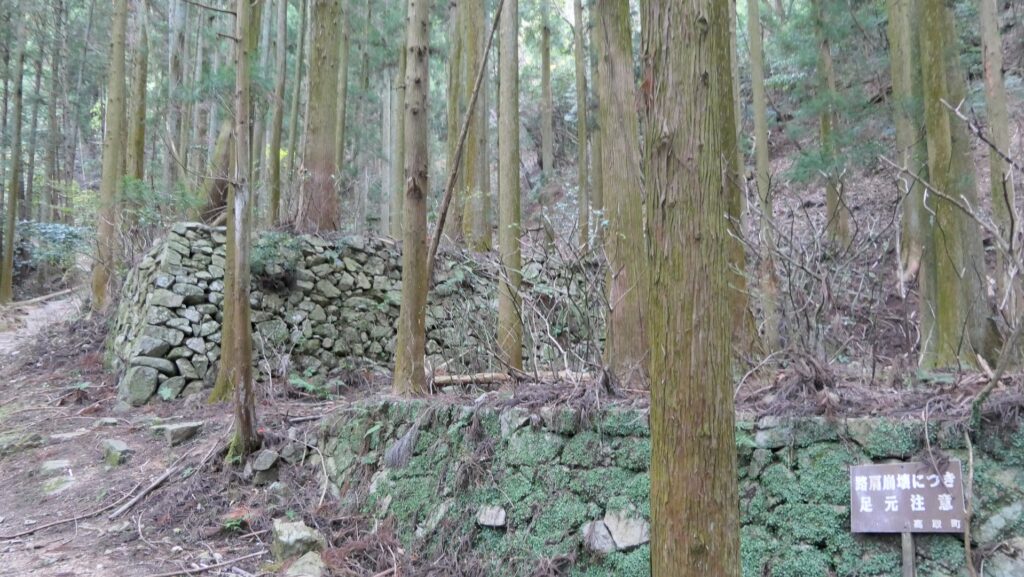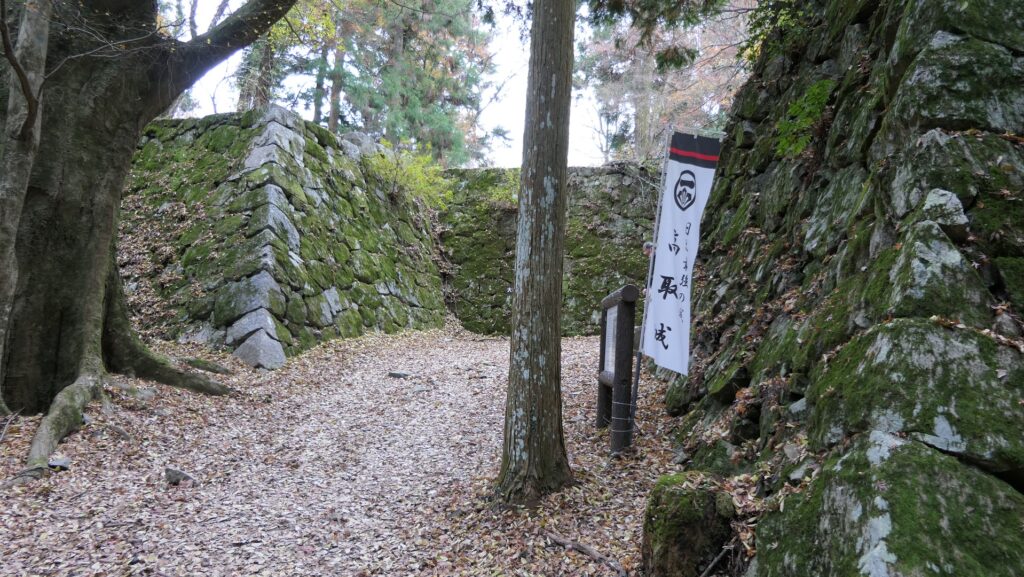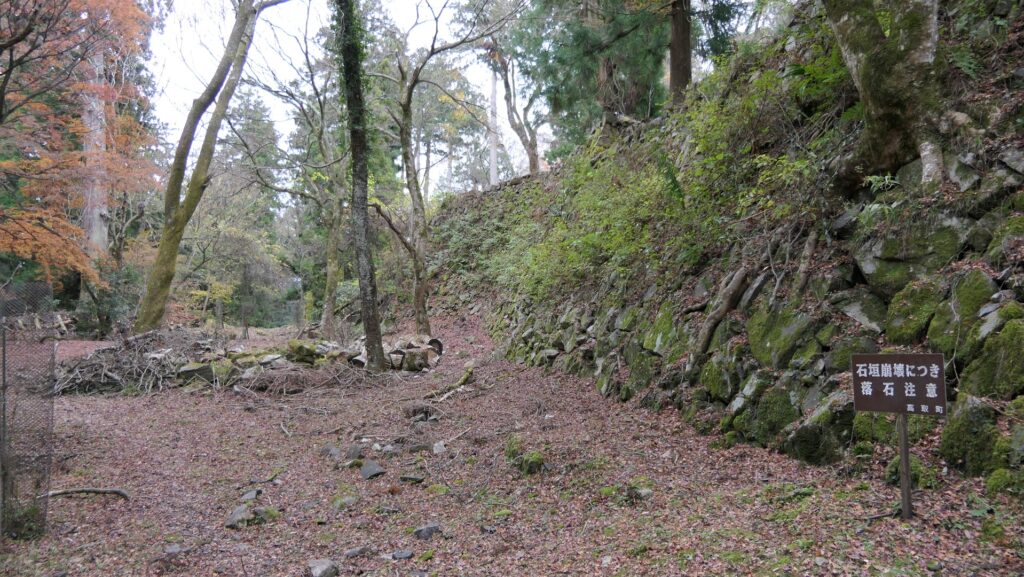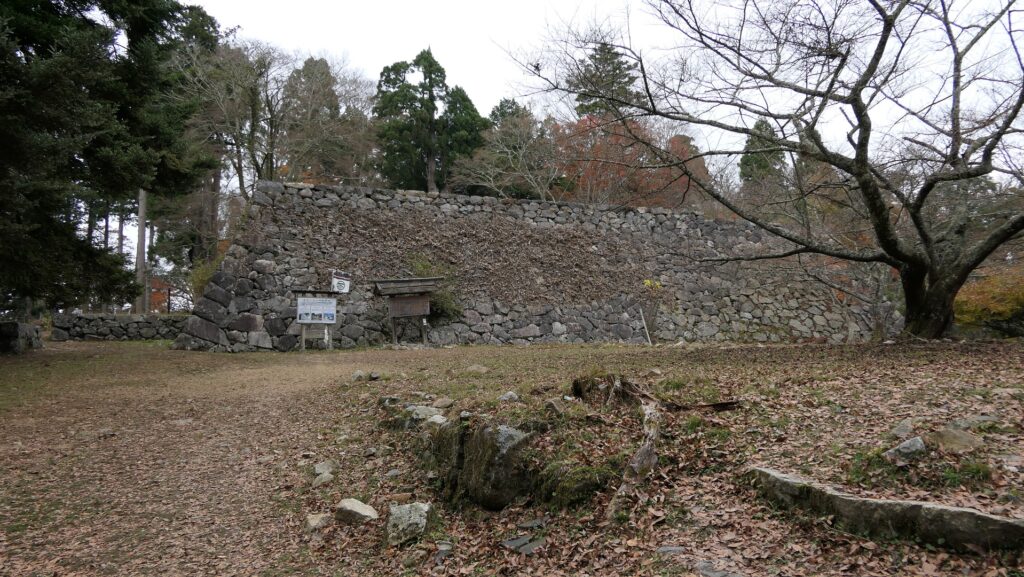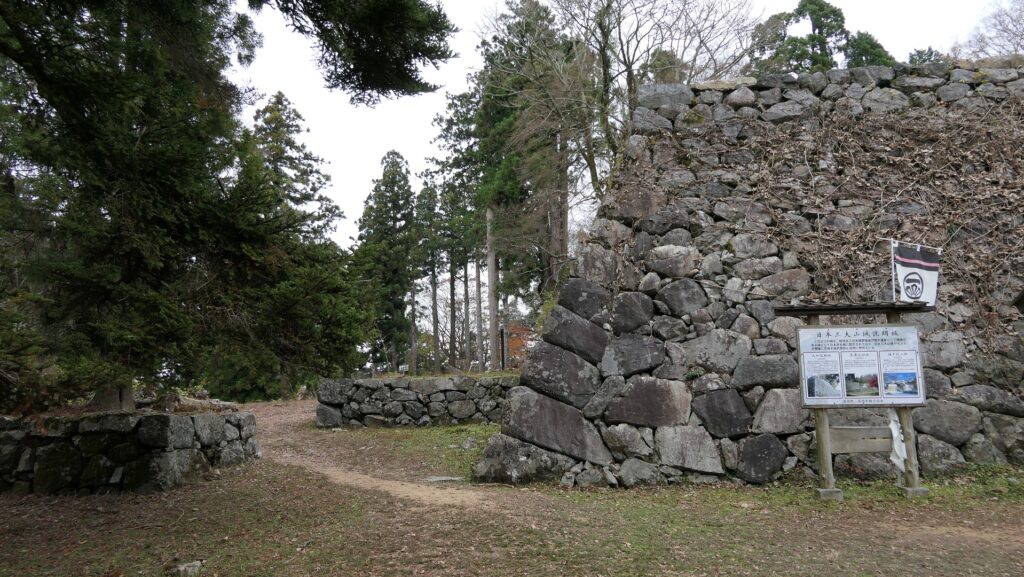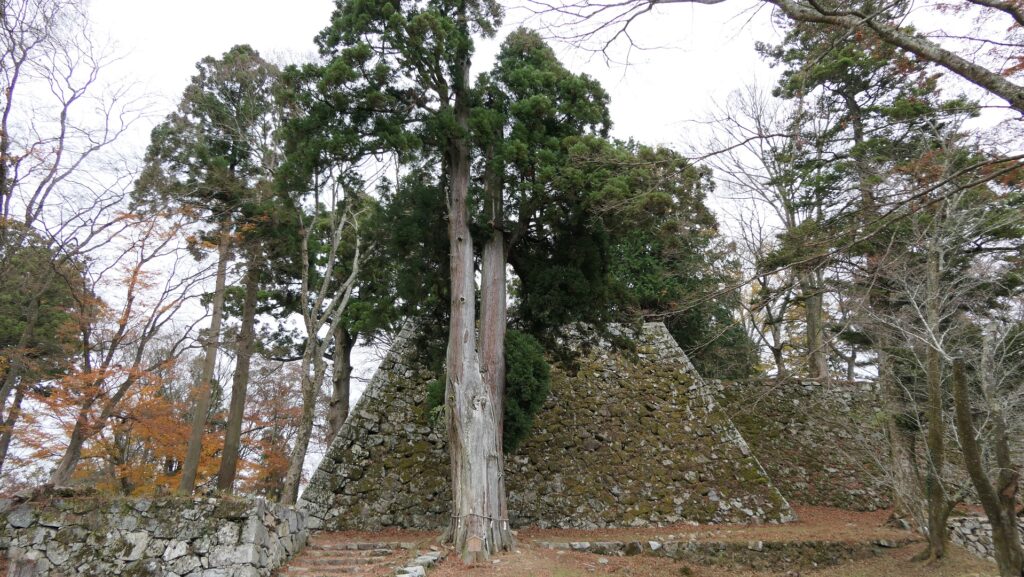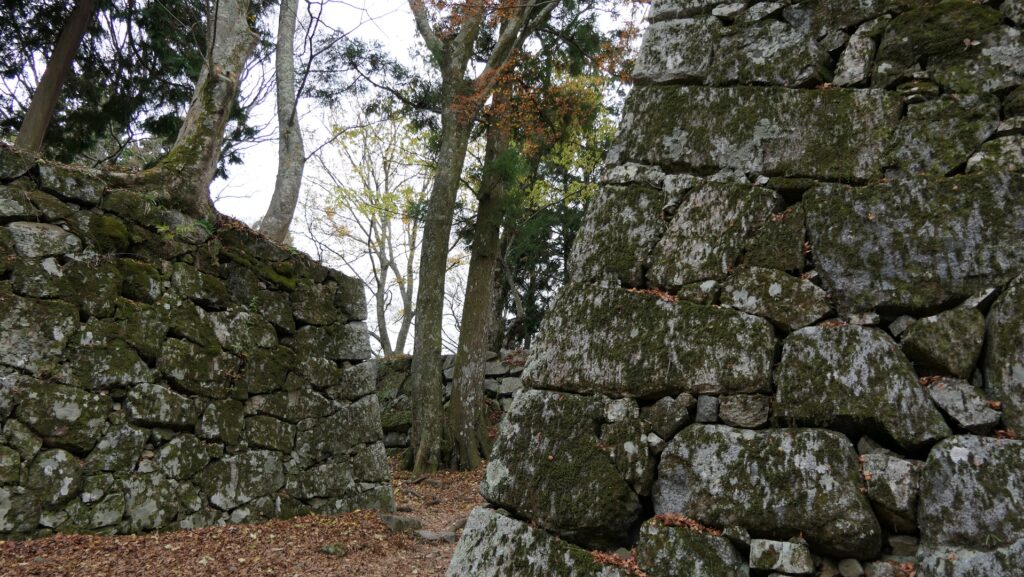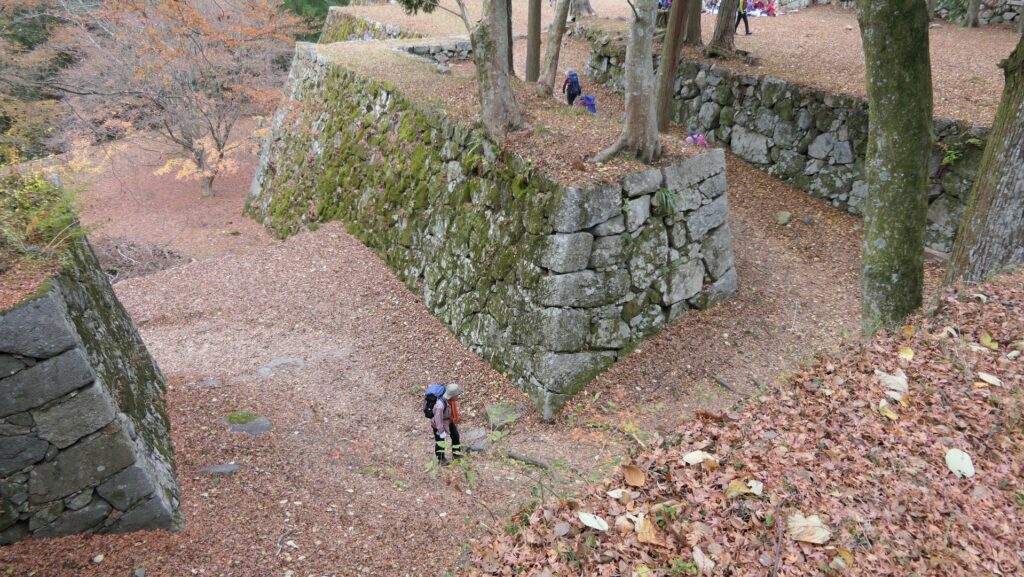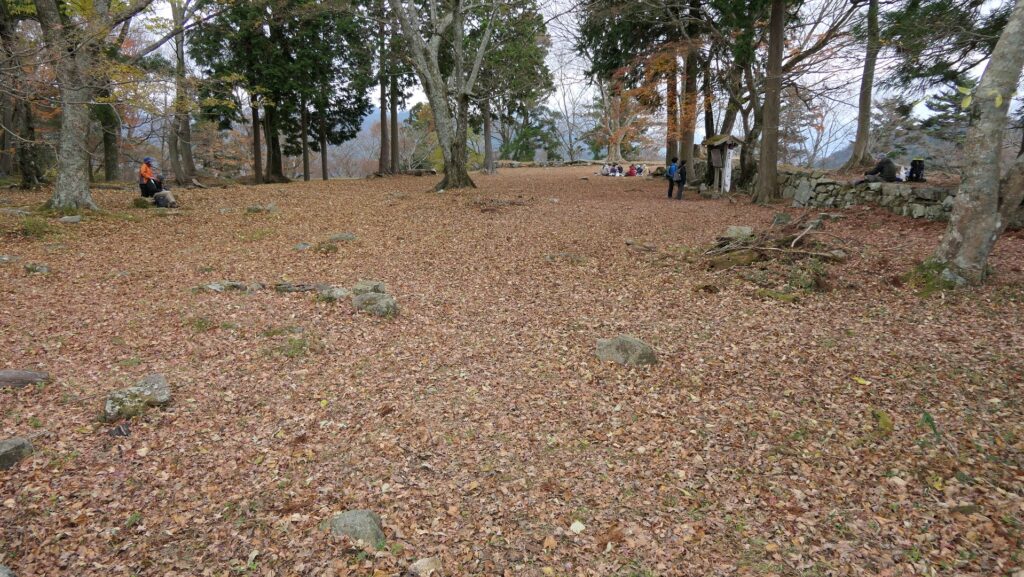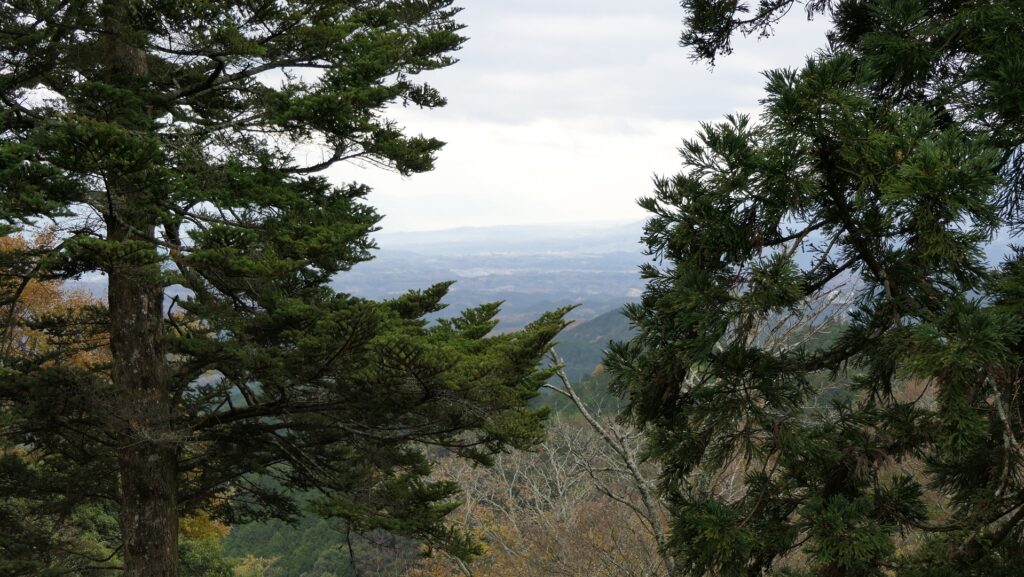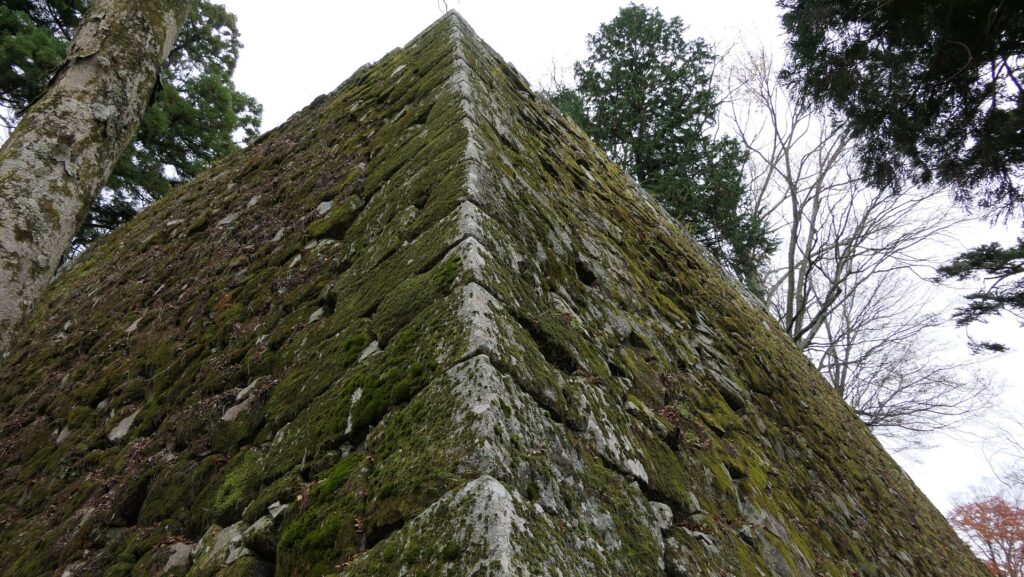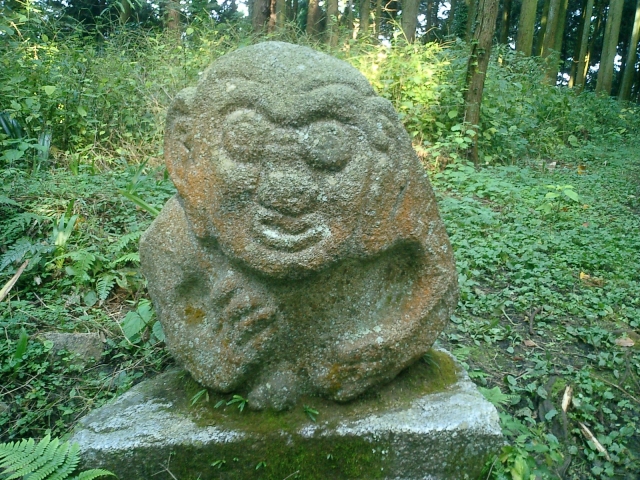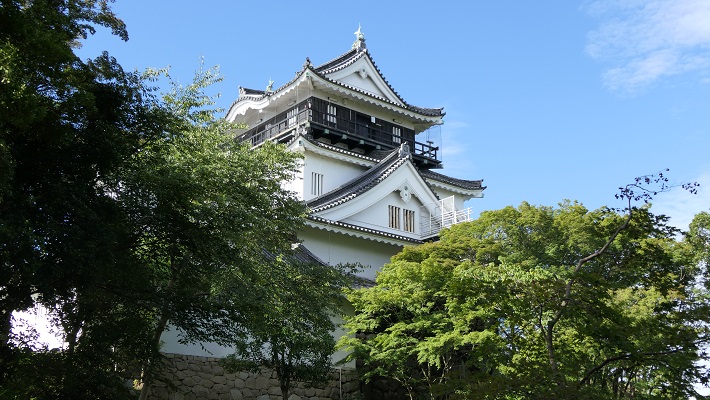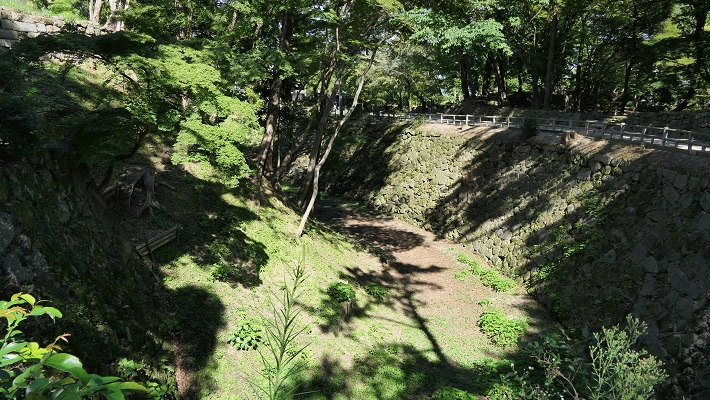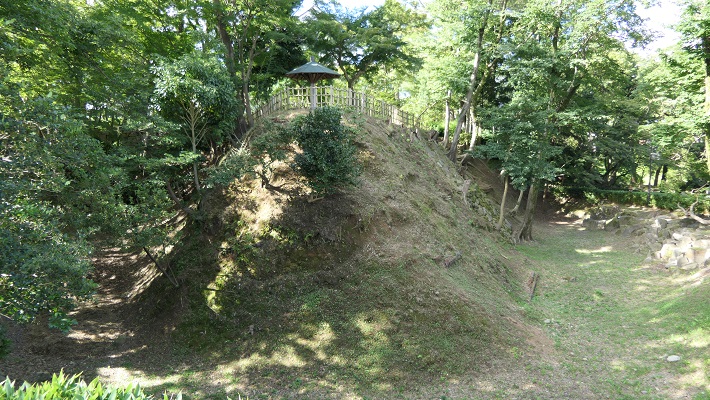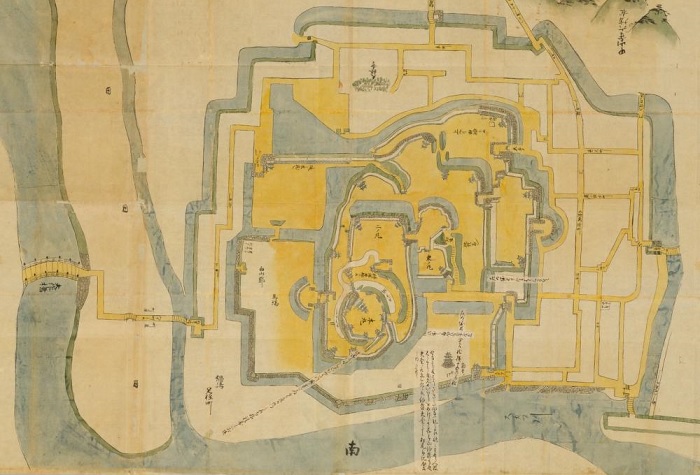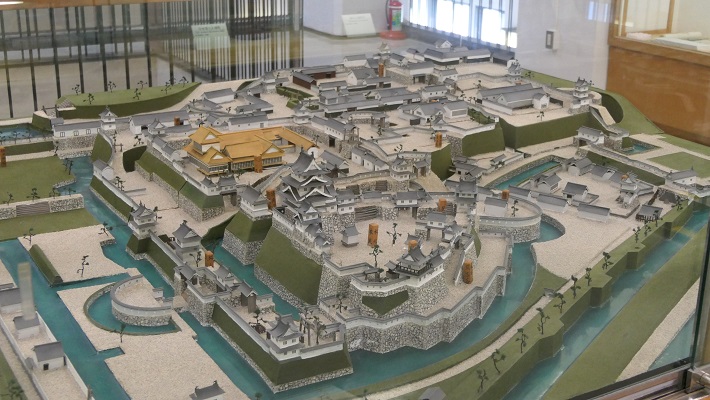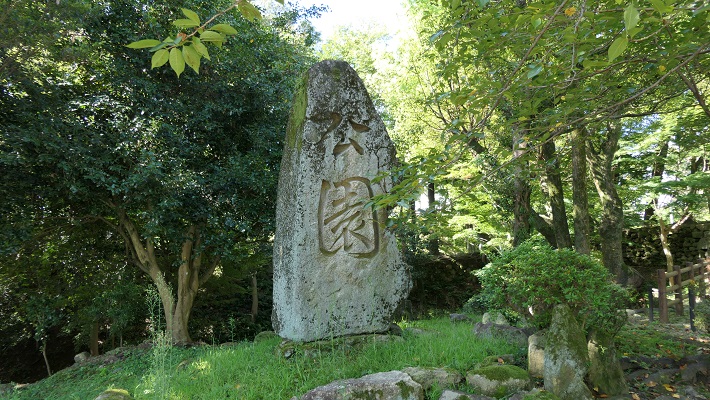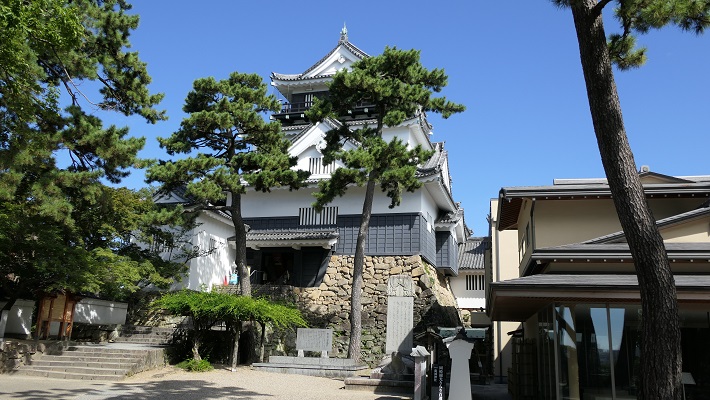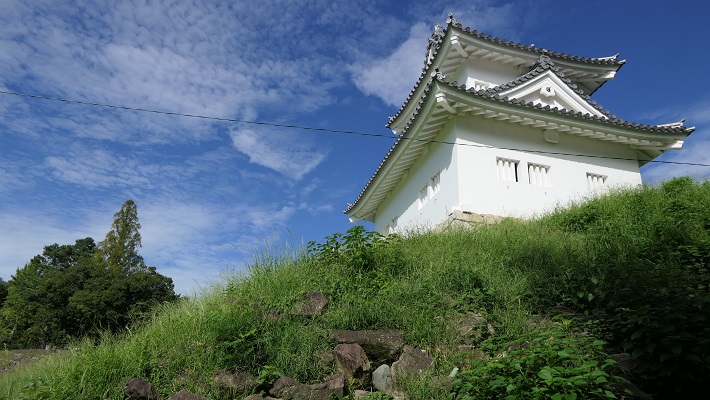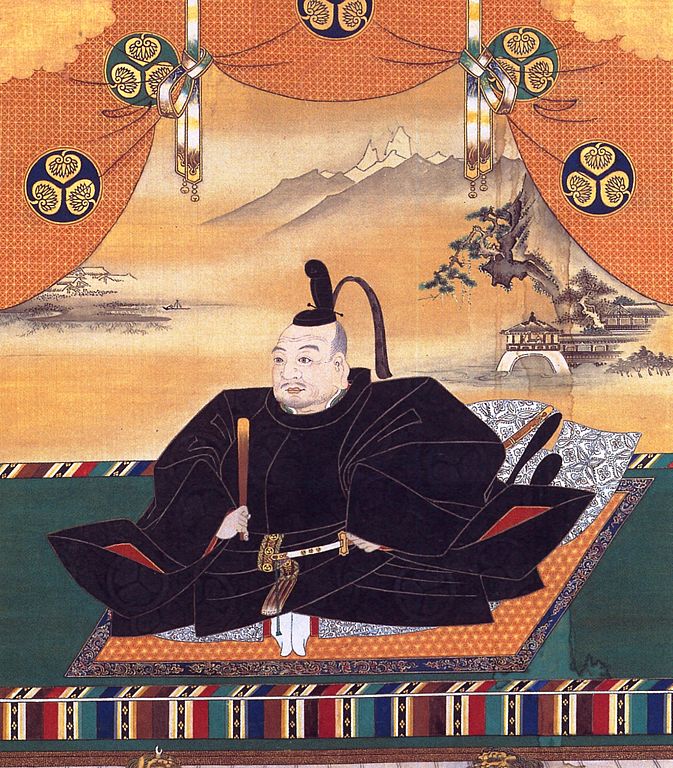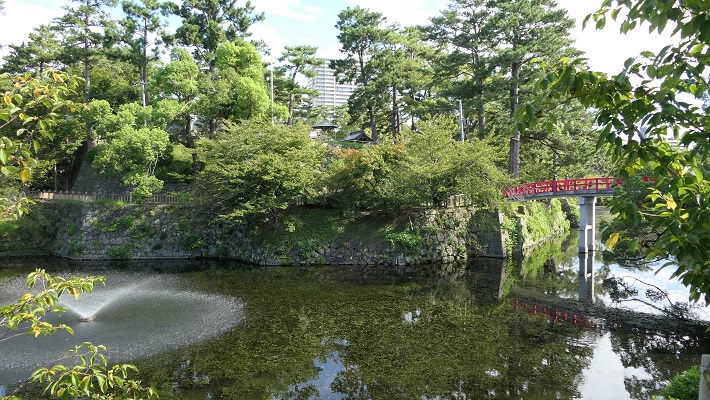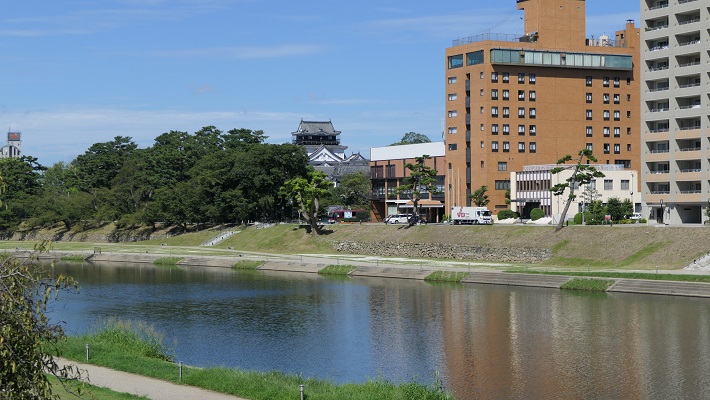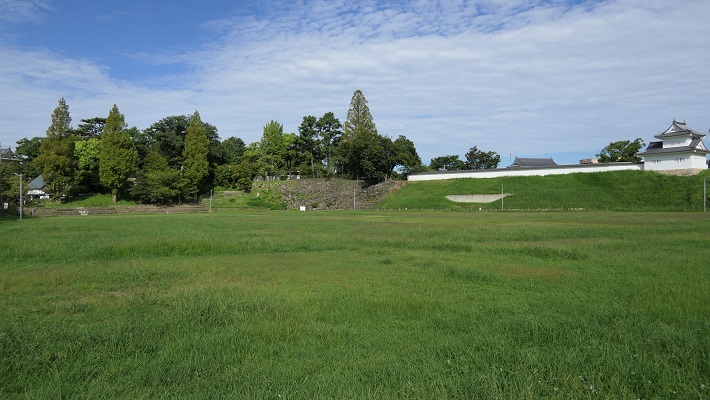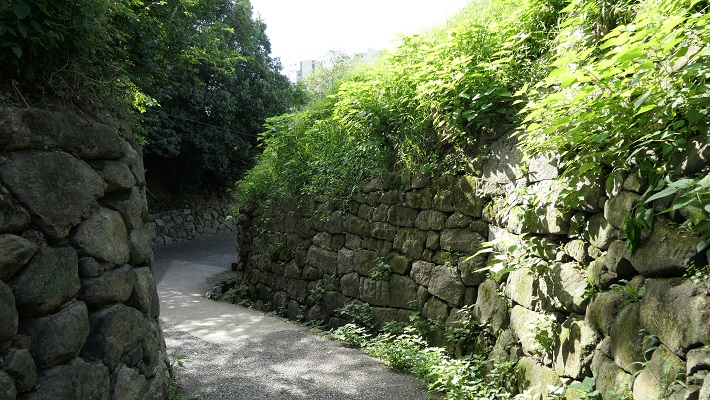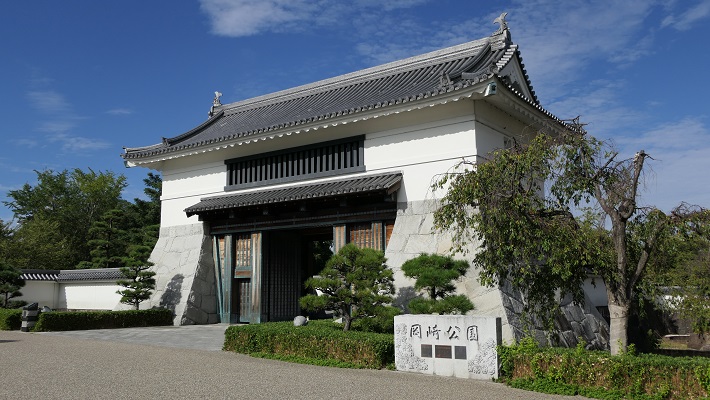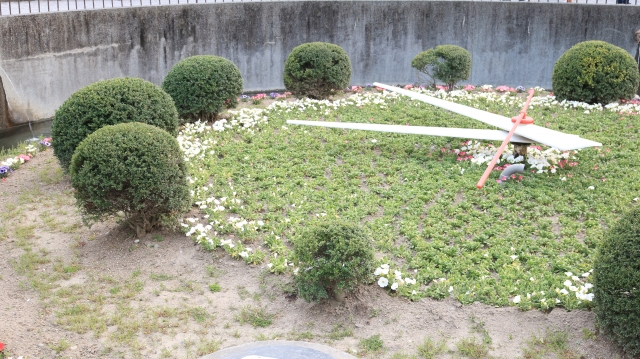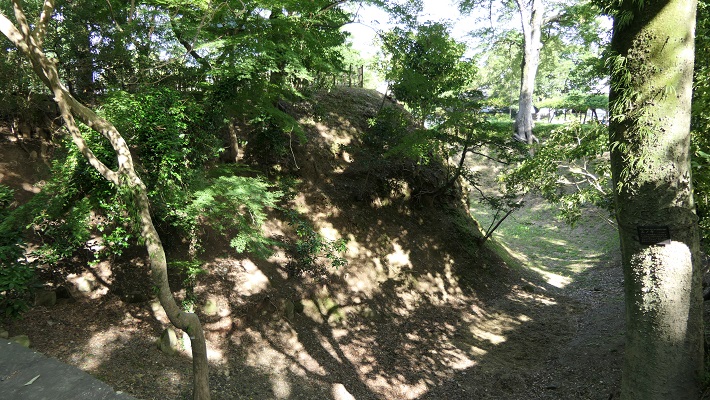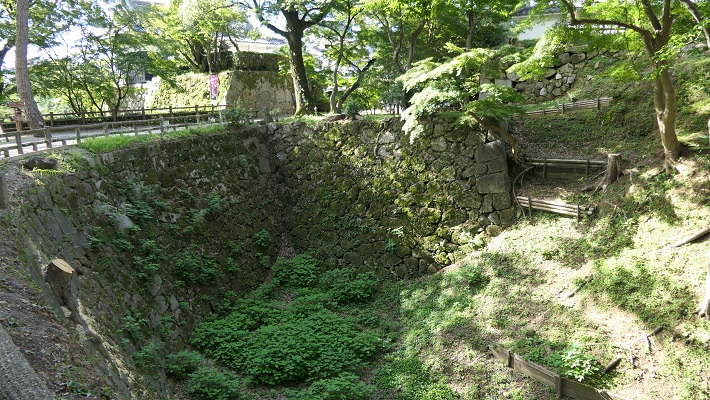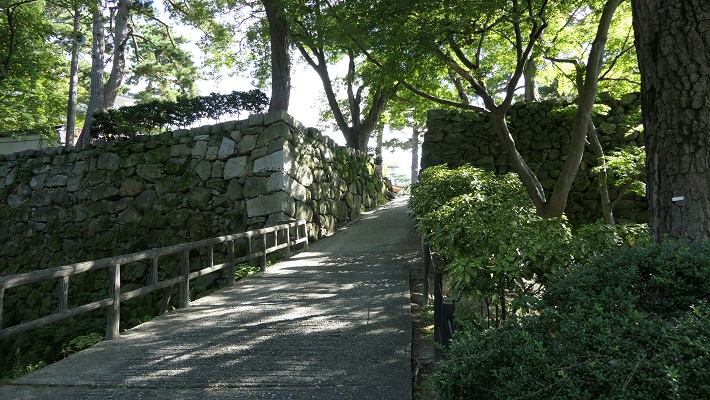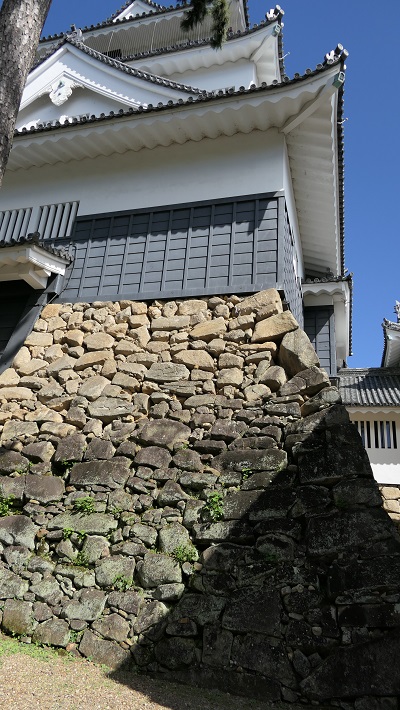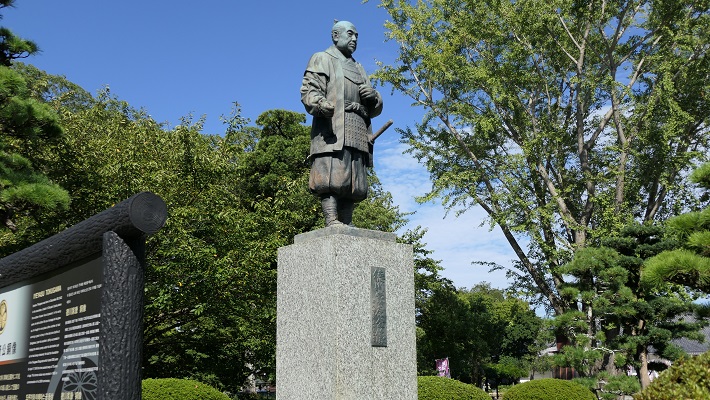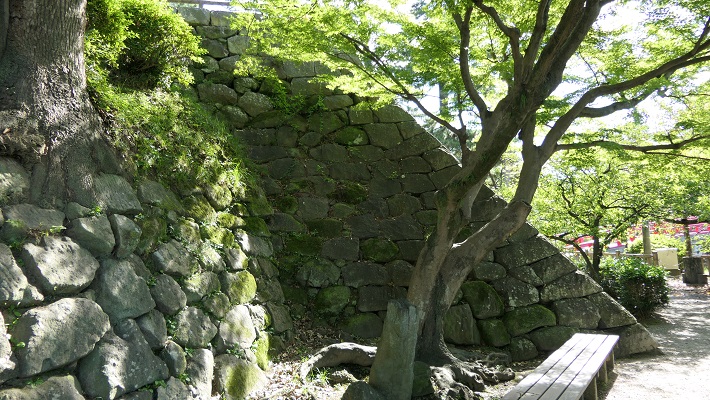立地と歴史~Location and History
寺院から城へ~Changing from Temple to Castle
金沢城は、石川県金沢市の最も有名なシンボルの一つであり続けています。城は、金沢平野に突き出した小立野大地の端に位置しており、犀川と浅野川に挟まれています。この地には最初、戦国時代の16世紀、大坂城の前身と同じように、一向宗の信者が住む尾山御坊がありました。加賀国(現在の石川県)は当時「百姓の持ちたる国」と呼ばれ、御坊はまるで城のように作られていました。
Kanazawa Castle is still one of the most famous symbols of Kanazawa City, Ishikawa Prefecture. The castle is located on the edge of the Kodachino Plateau sticking out to the Kanazawa Plain between Saigawa River and Asano-gawa River. This site was first used as the grounds for Oyama-Gobo Temple where the followers of the Ikko Sect lived like the former Osaka Castle in the 16th Century of Sengoku Period. Kaga Province (what is now Ishikawa Prefecture) was called “a country owned by peasants” at that time, and the temple was designed to look like a castle.
しかしながら後に、この百姓たちは1580年に有力な戦国大名、織田信長によって滅ぼされて、御坊は破壊されてしまいます。信長は配下の佐久間盛政を送り込み、御坊の跡地に金沢城を築かせました。城は最終的には1583年に、前田氏の始祖、前田利家のものとなります。前田氏は、徳川幕府により100万石の収量がある加賀藩の領有を許されました。江戸時代を通じて最大の藩でした。
Later on, however, the peasants were defeated by a great warlord, Nobunaga Oda, in 1580 and the temple was destroyed. He sent his man, Morimasa Sakuma to build Kanazawa Castle on the ruin of the temple. The castle was last owned by Toshiie Maeda, the founder of the Maeda Clan in 1583. The clan was granted the Kaga Domain, also earning one million koku of rice, by the Tokugawa Shogunate, which was the biggest domain throughout the Edo Period.
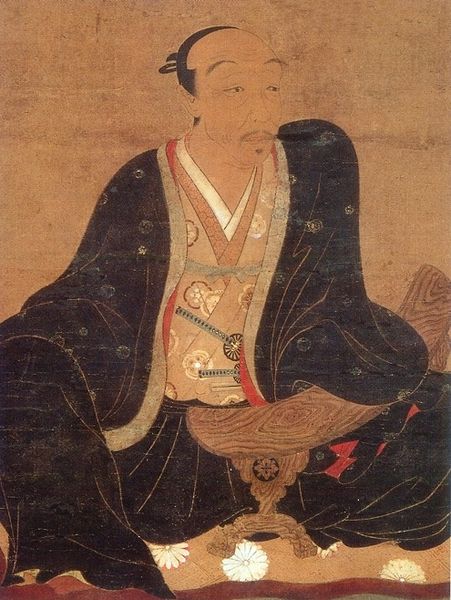
前田氏が城を拡張して維持~Maeda Clan develops and maintains Castle
前田氏は、城を拡張し、いくつもの曲輪を築きました。最も高い所にある「本丸」、二番目に高い「二の丸」、そして低い所の「三の丸」などです。大きな水堀である「百閒堀」は、城と、城の弱点の一つであった台地の山側との間に掘られました。「総構え」と呼ばれる最も外側にある土塁が、台地上にある城を取り囲んでいる平地に築かれました。
The clan developed the castle building into several enclosures, with the highest enclosure being the the Main Enclosure or “Honmaru”, the second highest being the Second Enclosure or “Ninomaru”, then the Third Enclosure or “Sannnomaru” below, and so on. A large water moat called “Hyakken-Bori” was dug between the castle and the mountain side of the plateau which was one of the weak points of the castle. The outermost earthen walls of the castle called “So-gamae” were built on the plain area surrounding the castle on the plateau.
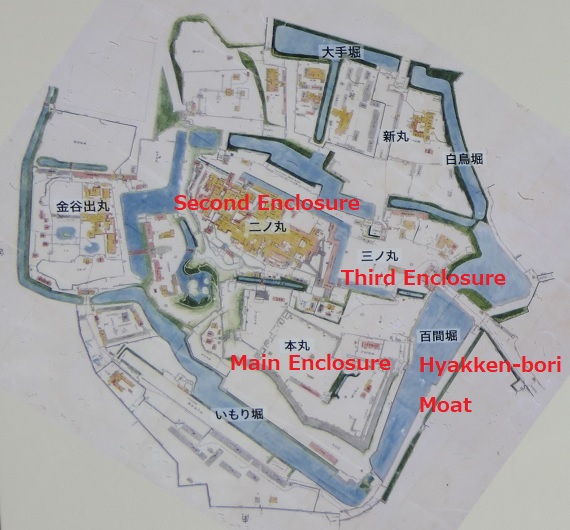

本丸上には、天守も築かれましたが、1602年に落雷により焼失してしまいました。その後、城は火災に何度も襲われました。前田氏は、その度に城を修復しましたが、城の姿は少しずつ変わっていきました。例えば、1631年の火災の後は、城の中心部は本丸から、二の丸にある二の丸御殿に移りました。1759年の火災の後には、「大手門」は再建されませんでした。元通りとなった河北門が代わって城の正門となりました。
The Main Tower was also built on the Main Enclosure, but it was struck by lightning and burned down in 1602. After that, the castle suffered from fires several times. The Maeda Clan restored the castle each time, but the appearance of the castle changed little by little. For example, after the fire in 1631, the center portion moved from the Main Enclosure to the Ninomaru Main Hall on the Second Enclosure. After the fire in 1759, the Main Gate or “Ote-mon” was not rebuilt. The restored Kahoku-mon Gate became the front gate of the castle instead.

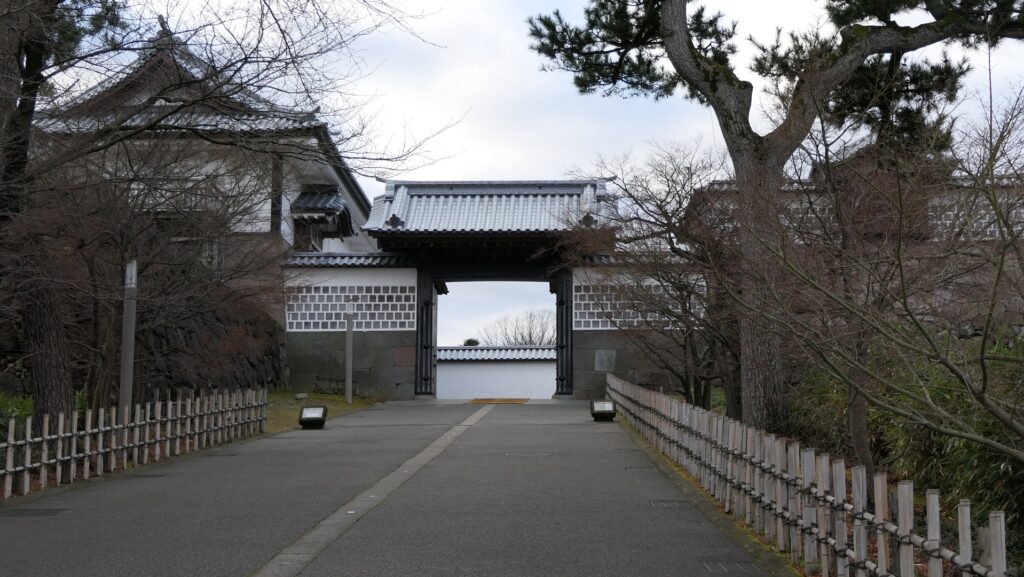
前田氏による城の特色~Maeda Clan also develops Features
前田氏が江戸時代を通して城に住み、修復し続けたことにより、城には興味深い特徴が備わっていきました。一つは様々な石垣です。前田氏は、火災や他の災害で被災した石垣を、その時々の最新の技術やスタイルにより再建しました。その結果、城は「石垣の博物館」と言われるようになりました。
As the Maeda Clan continued to live in and repair the castle all through the Edo Period, the castle developed interesting features. One of them is the variety of stone walls. The clan rebuilt the stone walls which were damaged by fires and other accidents using the latest technologies and style of each time period. As a result, the castle has been called “a museum for stone walls”.

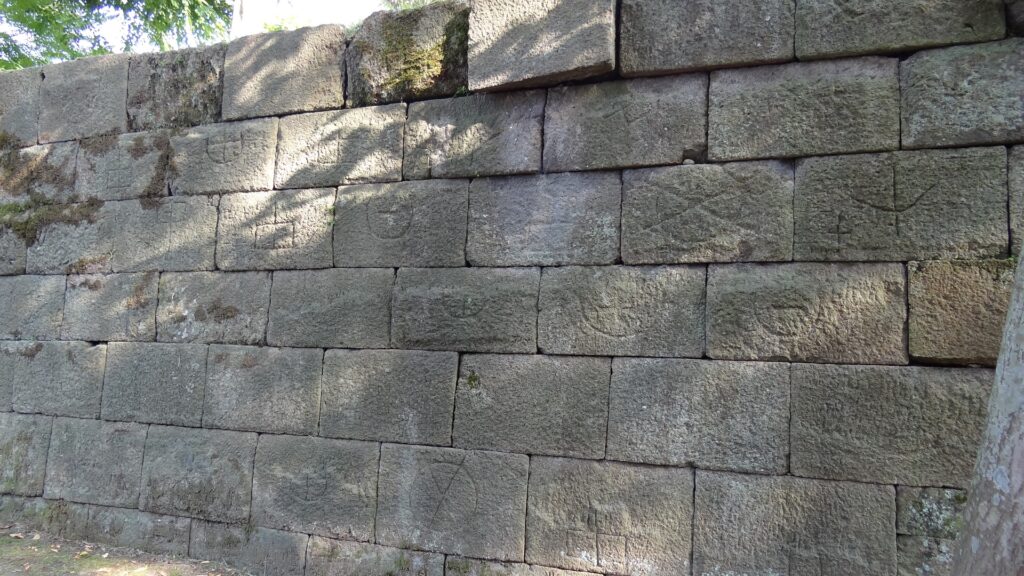
一方、石垣の上の多くの建物には、海鼠壁(四角い瓦を盛り上げた漆喰により連結して覆ったもの)、白い鉛瓦、出窓が付いた櫓といった共通の意匠上の特徴があります。これらにより城の建物はとても美しくなっています。
On the other hand, the many buildings on these stone walls had common design features such as Namako-kabe wall (covered with square tiles joined with raised plaster), white lead roof tiles, and bay window style turrets. These features made the castle buildings very beautiful.
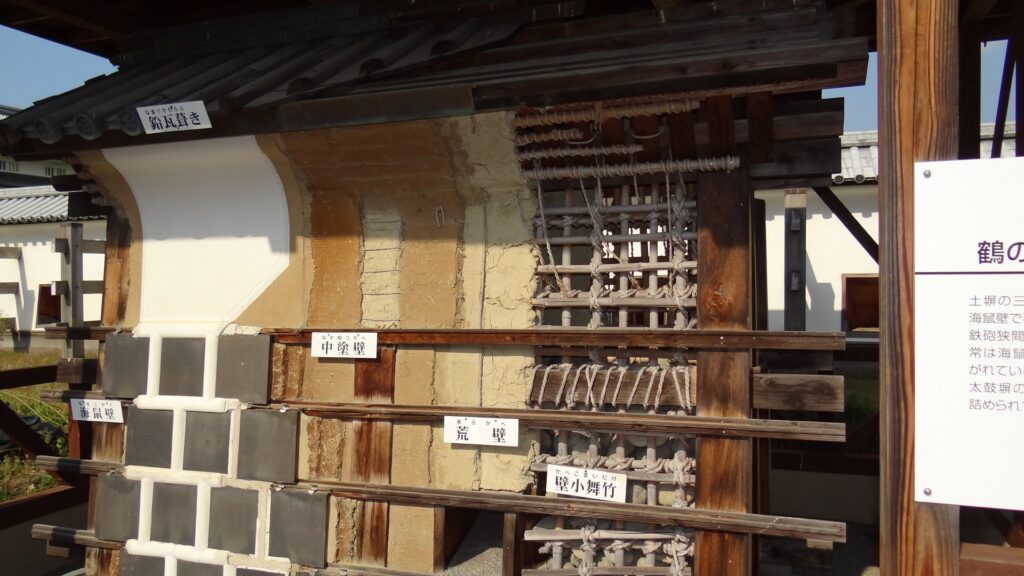

特徴~Features
城周辺の航空写真~The aerial photo around the castle石川門~Ishikawa-mon Gate
現在、金沢城は金沢城公園として一般に公開されています。その全周は2.2kmですが、高さ(約40m)があるためもっと大きく見えます。公園にはいくつか入口がありますが、最も有名なのは、城の3つある現存建物のうちの一つ、石川門です。この門は城の裏門だったのですが、やがて金沢城三御門の一つになりました。この門は、これも前田氏が造営した有名な庭園、兼六園の反対側にあります。かつては百間堀があった道路にかかった橋を渡って門に入ることができます。この門の構造は桝形門と言われていて、敵を防ぐ強力な防御力を得るために櫓や石垣で囲まれた四角い空間から成りたっていました。また、この門では、再築された時期が異なることによる複数のタイプの石垣を見ることができ、とても面白いものです。
Now, Kanazawa Castle is open to the public as Kanazawa Castle Park. Its perimeter is 2,2km, but it looks much larger because of its height (up to about 40m). The park has several gates, and the most popular one is the Ishikawa-mon Gate which is one of the three remaining buildings in the castle. The gate is the back gate of the castle, and eventually became one of the three important gates in the castle. It is located opposite to a famous garden called Kenrokuen which the Maeda Clan also created. You can go across the bridge over the road, where the Hyakken-bori moat once existed, to enter the gate. The structure of the gate is called Masugata-mon style which has a square space surrounded by turrets and walls to provide strong protection against enemies. The gate also has different types of stone walls because some parts of the walls were rebuilt several times. They look very interesting.

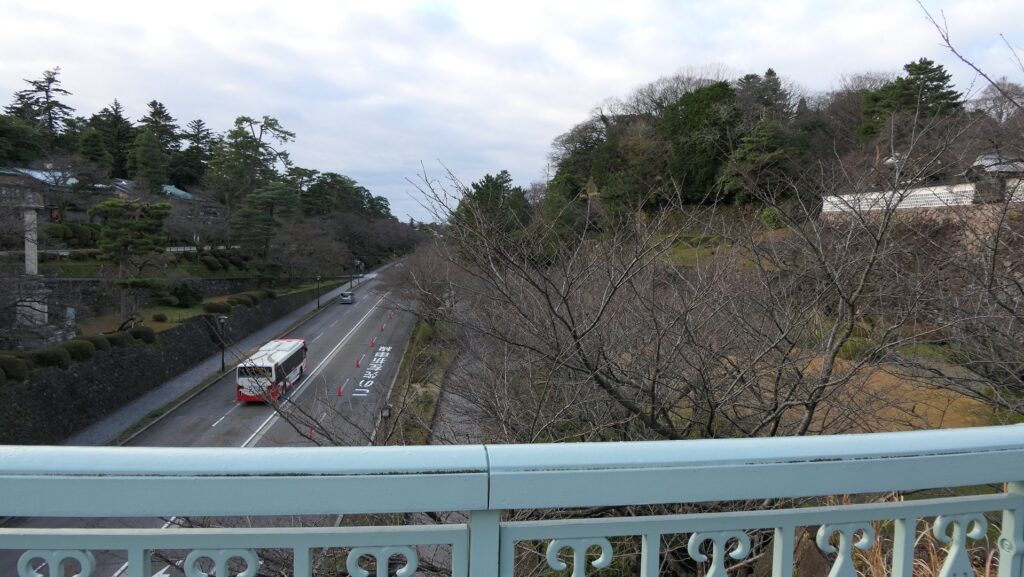
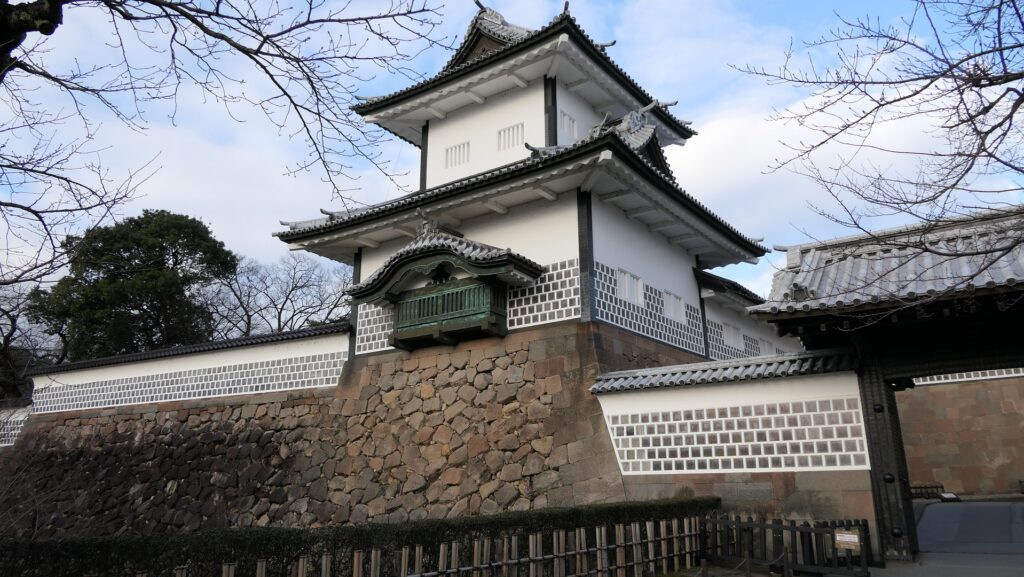
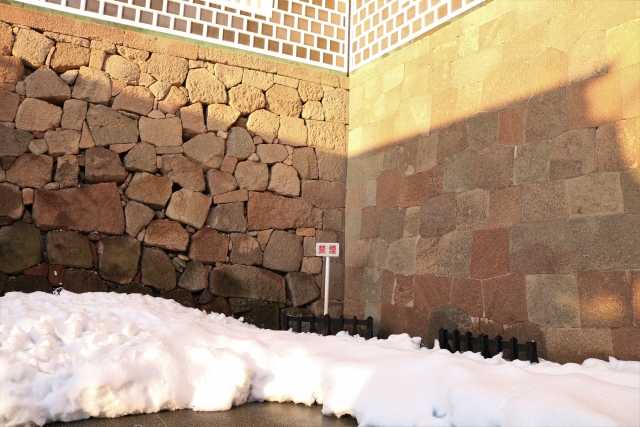
復元された建物群~Group of Restored Buildings
門の内側は三の丸で、河北門が右側に見え、橋詰門、五十間長屋、そして菱櫓が左側に見えます。これらは全て最近になって復元されました。河北門、橋詰門は金沢城三御門の残りの二つです。三の丸から見る河北門は、門の内側です。この門の正面は、新丸という更に低い位置の曲輪に面していて、ここには大手門がありました。橋詰門などは二の丸にあって、かつては曲輪を守っていました。この曲輪には二の丸御殿がありましたが、今は広場になっています。
The inside of the gate is the Third Enclosure where you can see Kahoku-mon Gate on the right, and Hashizume-mon Gate with Gojukken-nagaya Row House and Hishi Turret on the left. They have all been restored recently. These gates are two of the rest of the three important gates. What you see of Kahoku-mon Gate from the Third Enclosure is its back side. The front side of the gate faces a lower enclosure called Shinmaru which had the Main Gate. Hashizume-mon Gate, etc., are on the Second Enclosure, and protected its entrance in the past. The inside of the enclosure once had the Ninomaru Main Hall, but is a square now.
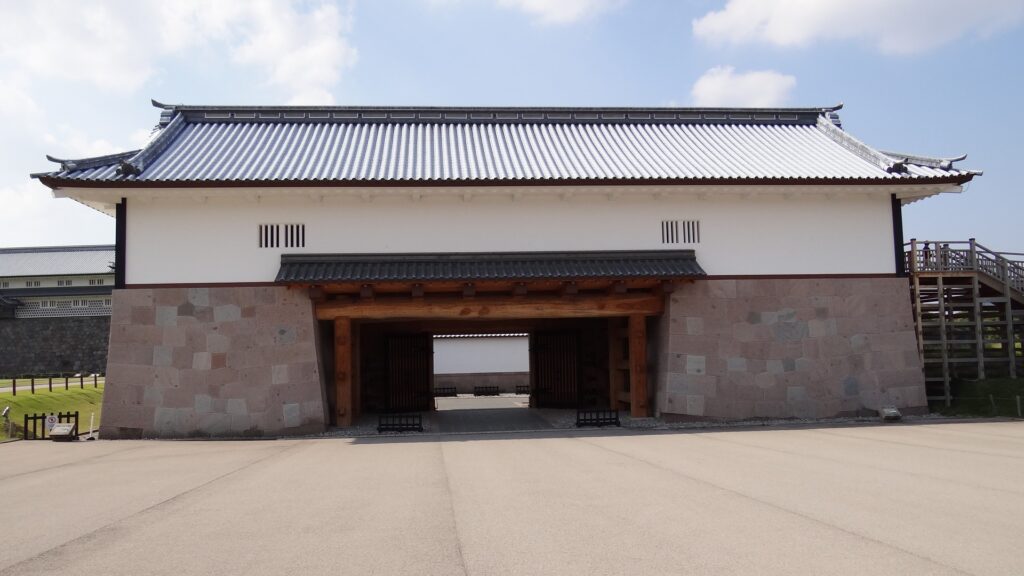
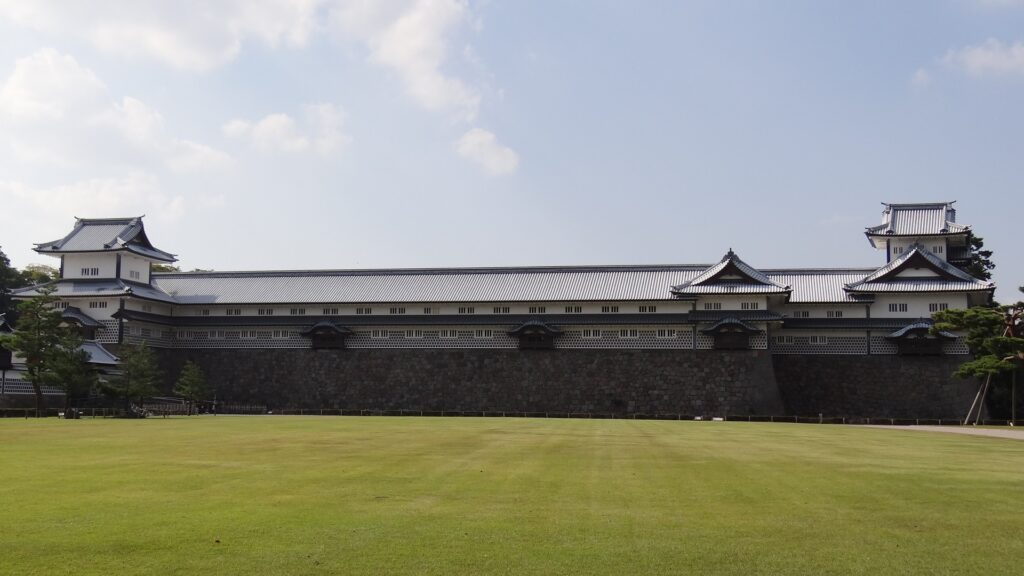

本丸周辺~Around Main Enclosure
本丸へは三の丸、二の丸両方から行くことができます。三の丸からは、東丸を通過して登っていきます。ここには、この城では最も古い石垣の一つと、現存する鶴丸倉庫があります。本丸は、城では最も高い位置にあり、早くに放置されたためか、林のようにも見えます。本丸の端からは、街並みを望むことができます。ここにはかつて30m近い高石垣がありましたが、明治時代に崩壊してしまいました。同じ場所で現在見ることができる階段状の石垣は、日本陸軍によって再建されたものです。
You can go to the Main Enclosure from both the Third and Second Enclosures. From the Third Enclosure, you will walk up to the Main Enclosure through the Higashi-maru Enclosure. Here you can see one of the oldest stone walls in the castle and the remaining “Tsurumaru” Warehouse. The Main Enclosure is the highest point of the castle and looks like a forest probably because it was abandoned earlier. You can see a town view from the edge of the enclosure. It once had nearly 30m high stone walls which collapsed in 1907 during the Meiji Era. The terraced stone walls we see now at the same place have been rebuilt by the Japanese Army.
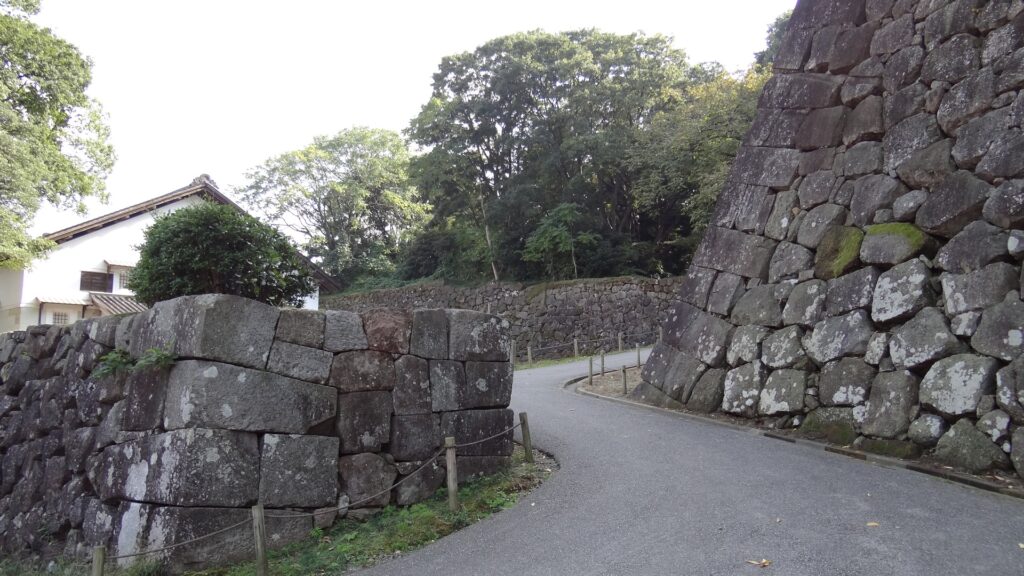
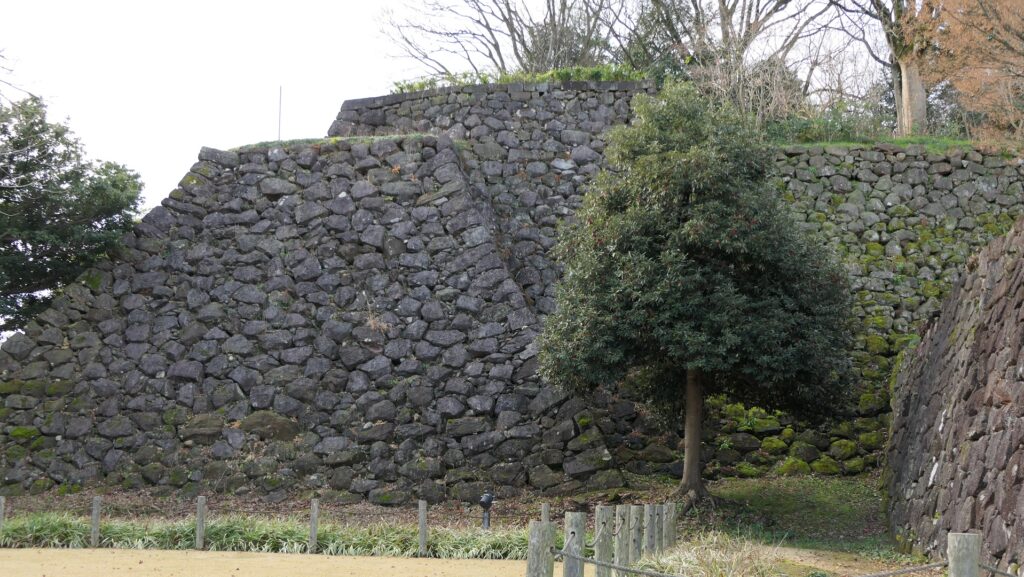
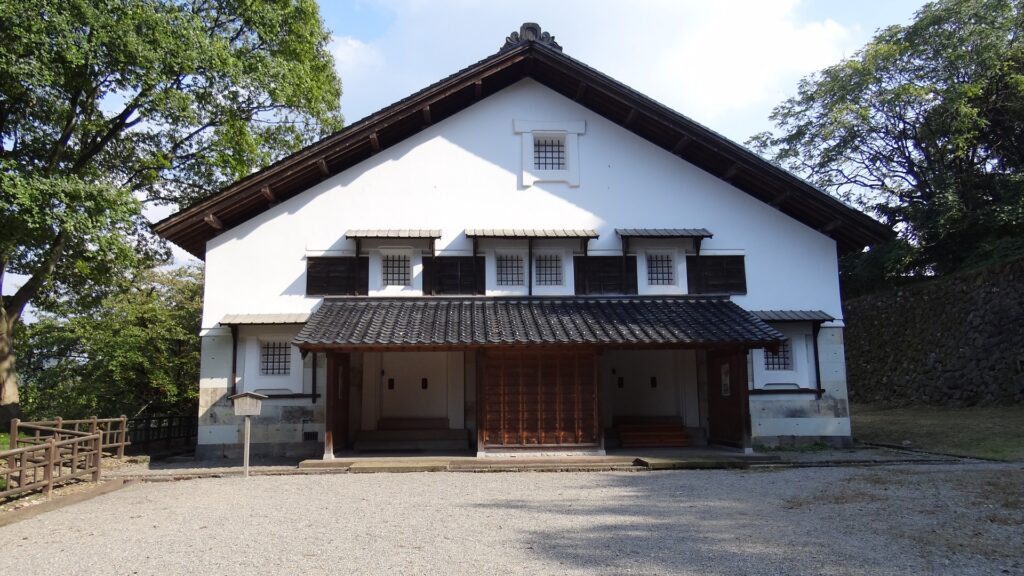
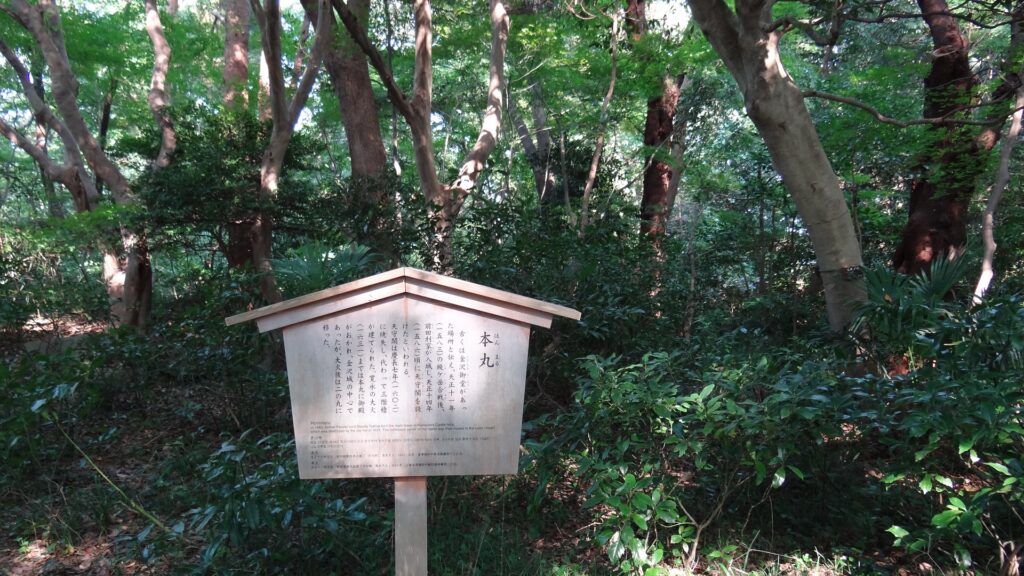

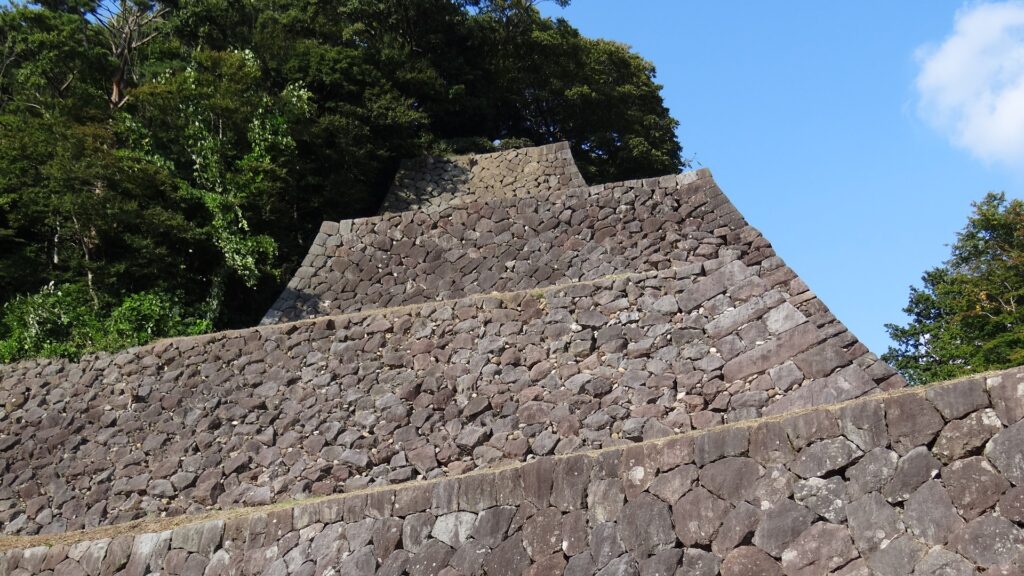
二の丸と本丸の間には、「極楽橋」という橋が渡されており、その名前の由来は尾山御坊の時代に遡るといいます。極楽は仏教徒にとっての天国のことです。本丸のこの橋の近くには、残りの現存建物である三十間長屋があります。金沢城の3つの現存建物はいずれも重要文化財に指定されています。
Between the Second and Main Enclosures, you can go across a bridge called “Gokuraku-bashi” which derived its name from the period of Oyama-Gobo from the Ikko Sect Buddhists. Gokuraku means Buddhists’ Paradise. Near the bridge on the Main Enclosure, there is the other remaining building called Sanjukken Row House. The three remaining buildings in Kanazawa Castle are all designated as Important Cultural Properties.

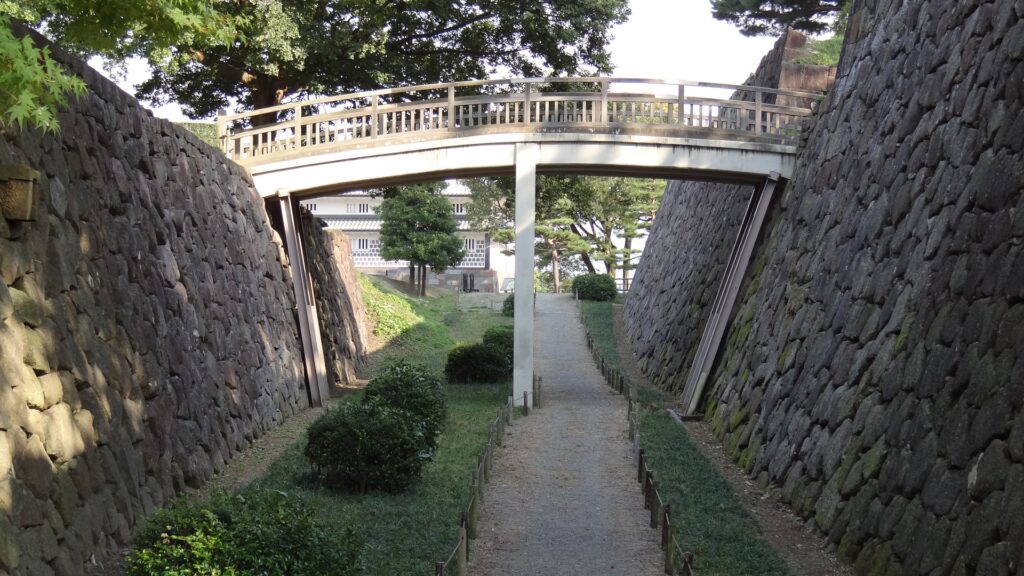
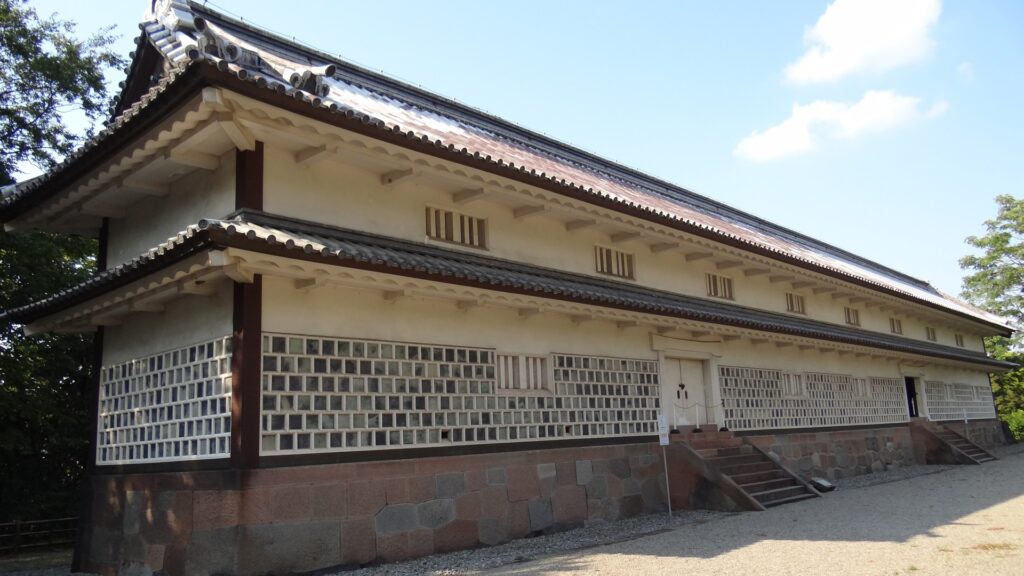
その後~Later History
明治維新後、金沢城は日本陸軍によって使われました。金沢は軍都となり、市民の10%(2万人)が軍と関係がありました。城にある軍の遺跡としては、石垣、トンネル、第7旅団司令部建物などを現在見ることができます。ところが、今残っている3棟を除く元からあった全ての城の建物は、1881年の火災により焼けてしまいます。
After the Meiji Restoration, Kanazawa Castle was used for the Japanese Army. Kanazawa became a military base where about 10% of citizens (20,000) were associated with the military. We can now see the ruins of the military in the castle such as stone walls, tunnels and the building for the Headquarters of the 7th Brigade. However, all the original castle buildings were unfortunately destroyed by the fire in 1881, except for the three remaining buildings.
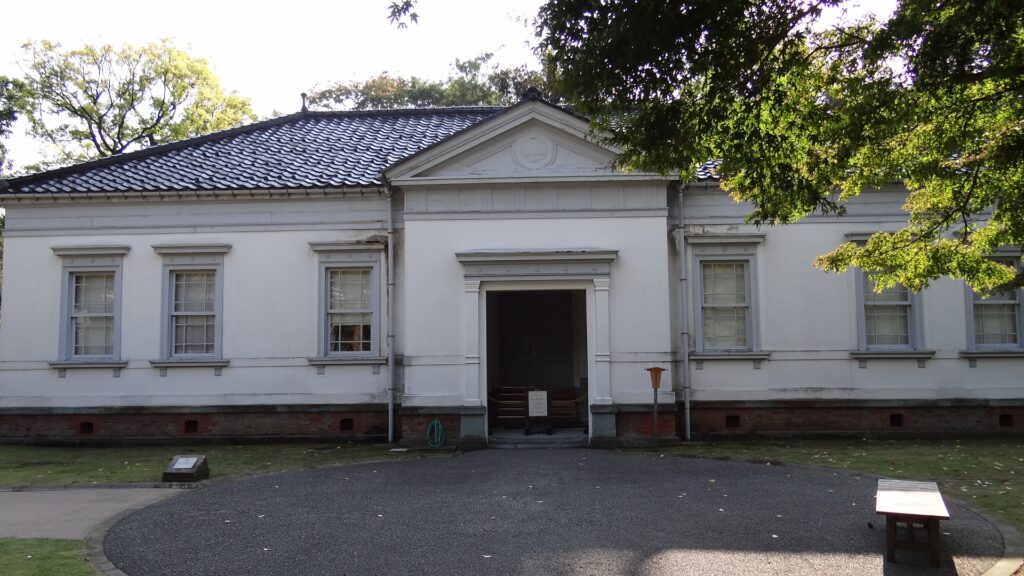

第二次世界大戦後、1949年から1995年まで、城は金沢大学として使われました。1996年以来、石川県は歴史公園として整備を進めています。伝統的建物を復元している中で、県は公園の名前を、金沢城址公園から金沢城公園と改めました。最近、石川門の反対側にあり、市街地に近い「鼠多門」という門が2020年7月に復元されました。これで、城を訪れ、楽しむことがもっと容易にできるようになりました。行政側は今、二の丸御殿を復元できるかどうか検討しています。
After World War II, the castle was used for Kanazawa University between 1949 and 1995. Since 1996, Ishikawa Prefecture has been developing it as a historical park. While restoring the traditional buildings, the prefecture renamed the park from Kanazawa Castle Ruins Park to Kanazawa Castle Park. One of the castle gates called “Nezumita-mon”, on the opposite side of Ishikawa-mon Gate, near the town area, was restored recently in July 2020. This made it easier for people to visit and enjoy the castle more. Officials are also considering if they should restore the Ninomaru Main Hall now.
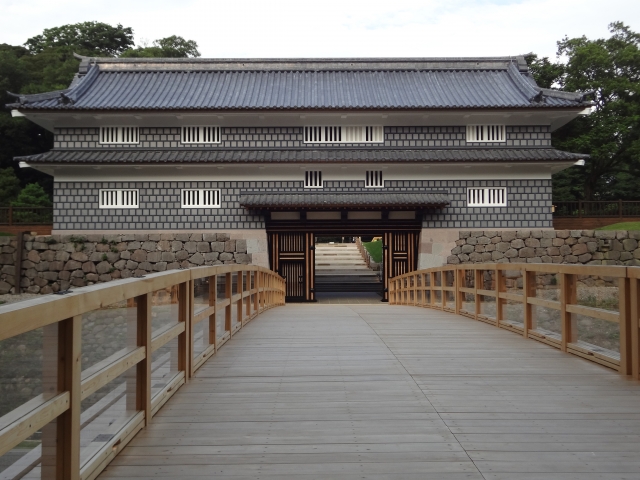
私の感想~My Impression
公園の名前の変更は、行政側の大変な努力と、日本の歴史を伝え、観光を盛り上げようとする決意を表しています。伝統的建物を復元し維持していくには多額の予算を必要とします。更にこのような建物の使用は、法律により厳しく制限されています。よって、建物の用途はほとんど観光のためということになるでしょう。余計なお世話かもしれませんが、少し心配です。この挑戦がこの先成功するよう望みます。
The renaming of the park shows the officials’ unusual effort and determination to preserve the history of Japan and increase tourism. Restoring and maintaining traditional buildings requires a huge budget. In addition, the uses for such buildings are strictly limited by law. That means these buildings are mostly for tourism. Counting others’ money is not my business, but I am a little concerned about it. I hope their challenge will be successful in the future.

ここに行くには~How to get There
車で行かれる場合は、北陸自動車道の金沢森本ICから約20分かかります。公園周辺にいくつか駐車場があります。
If you want to go there by car, it takes about 20 minutes from the Kanazawa-morimoto IC on Hokuriku Expressway. There are several parking lots around the park.
鉄道を使う場合は、金沢駅から、北陸鉄道バスか金沢循環バスに乗って、兼六園下バス停で降りてください。そこから歩いて約5分です。
When using the train, take the Hokuriku-tetsudo bus, Kanazawa Loop bus, or Kenrokuen Shuttle from Kanazawa Station, and get off at the Kenrokuen-shita stop. It takes about 5 minutes from the stop on foot.
リンク、参考情報~Links and References
・金沢城公園~Kanazawa Castle Park
・「よみがえる日本の城8」学研(Japanese Book)
・「日本の城改訂版第5号」デアゴスティーニジャパン(Japanese Book)
・「石垣の名城完全ガイド/千田嘉博著」講談社(Japanese Book)
・「列島中央の軍事拠点(地域のなかの軍隊)」吉川弘文館(Japanese Book)


